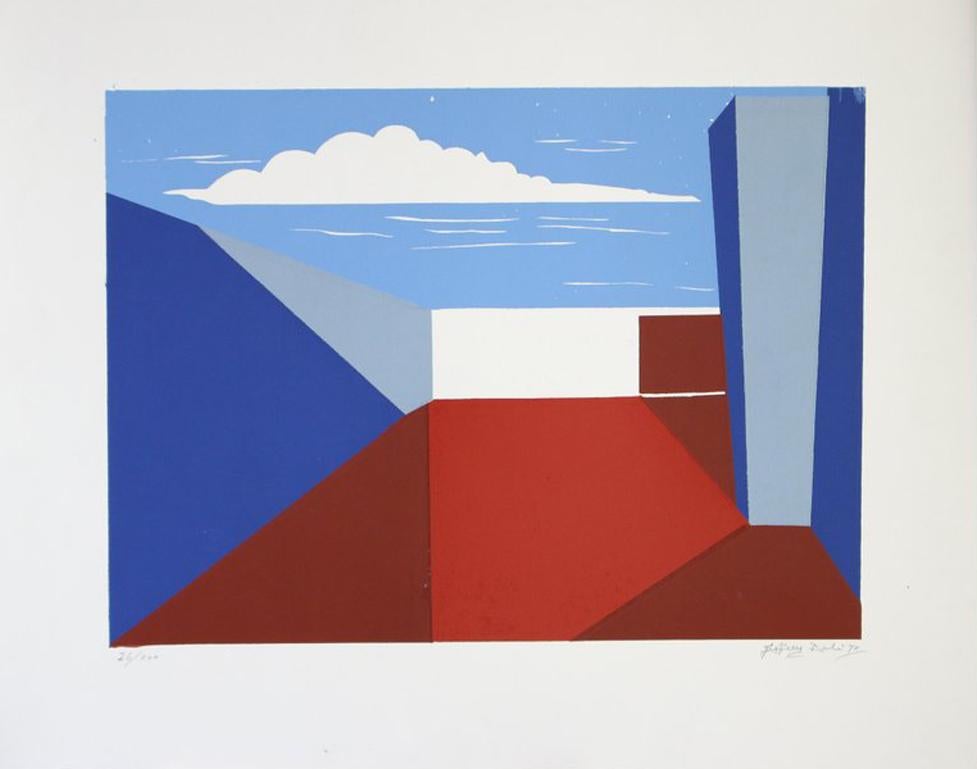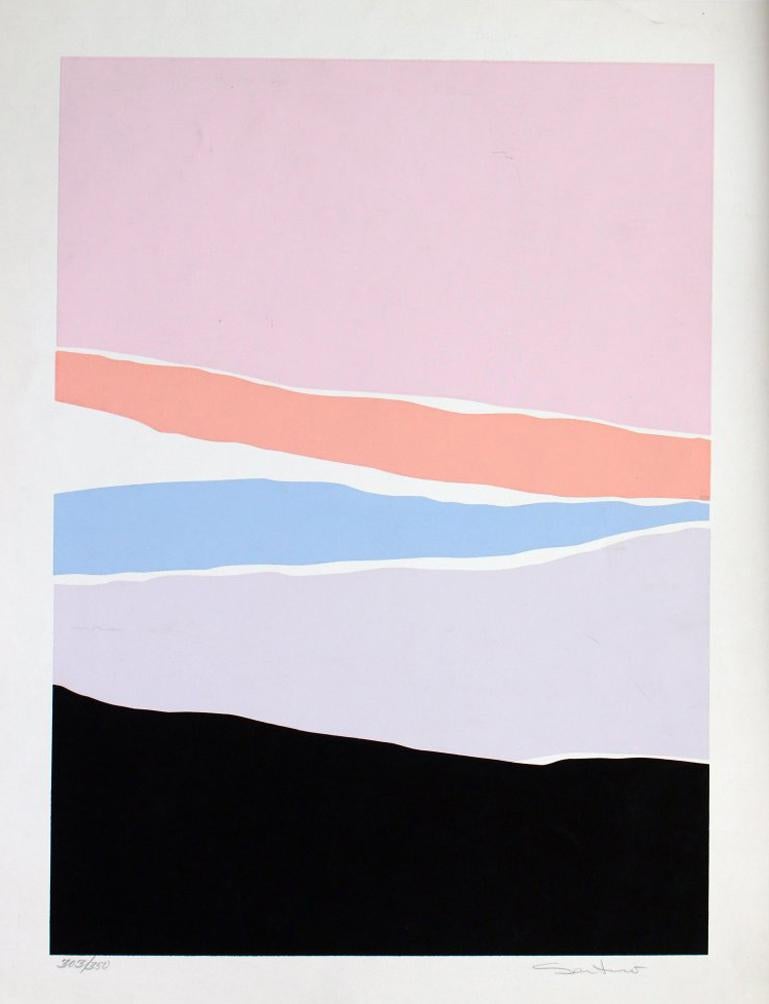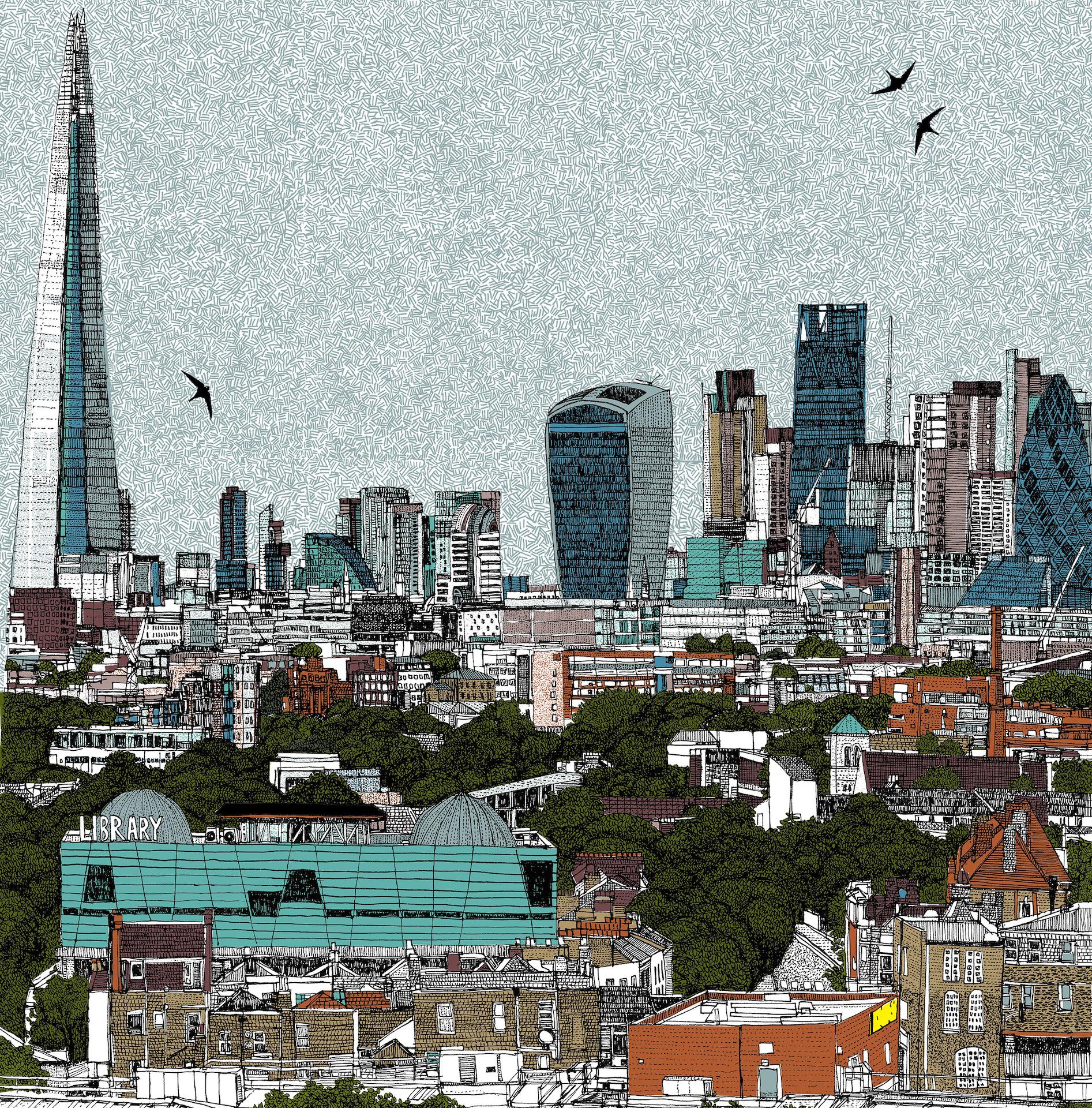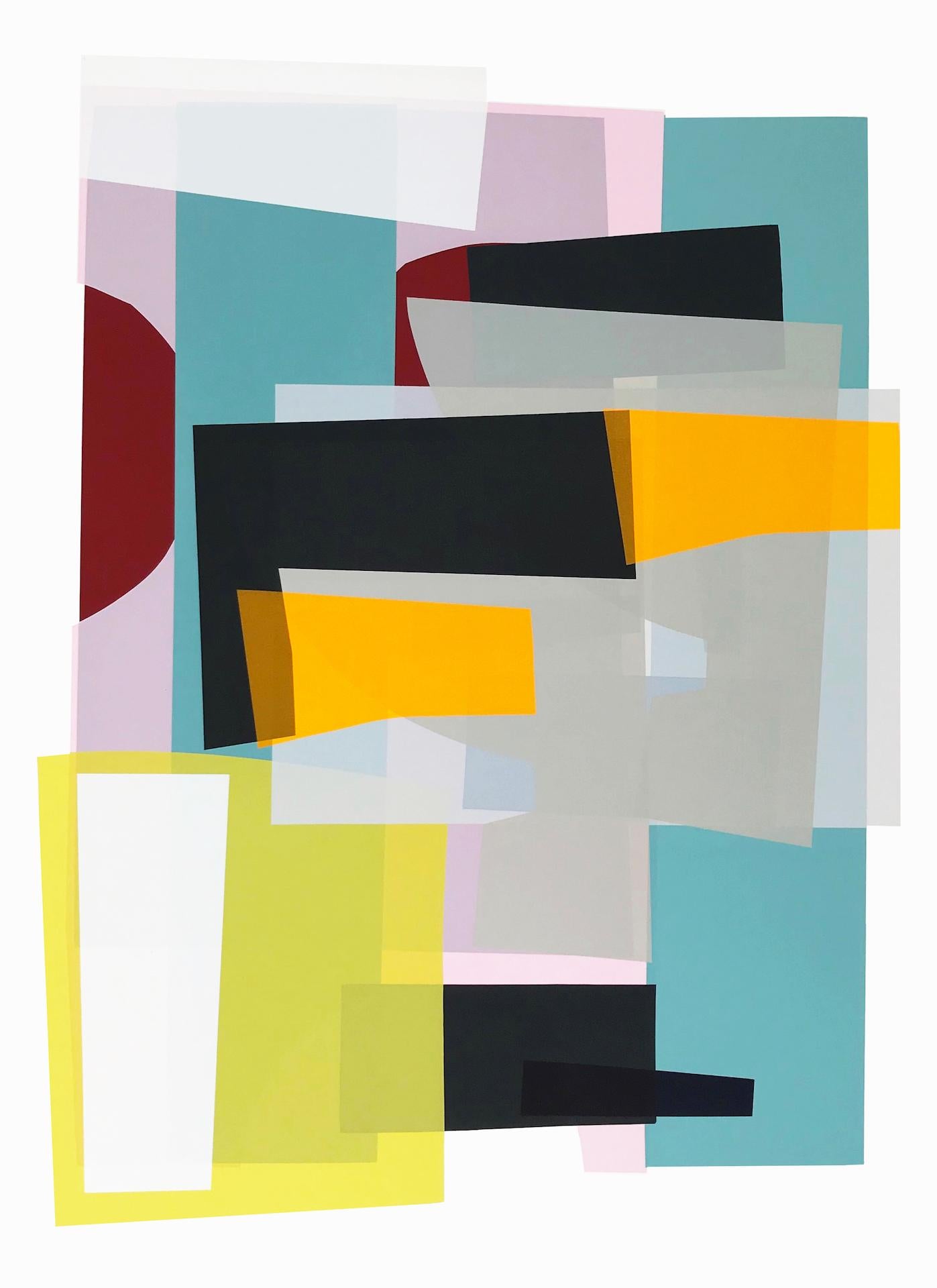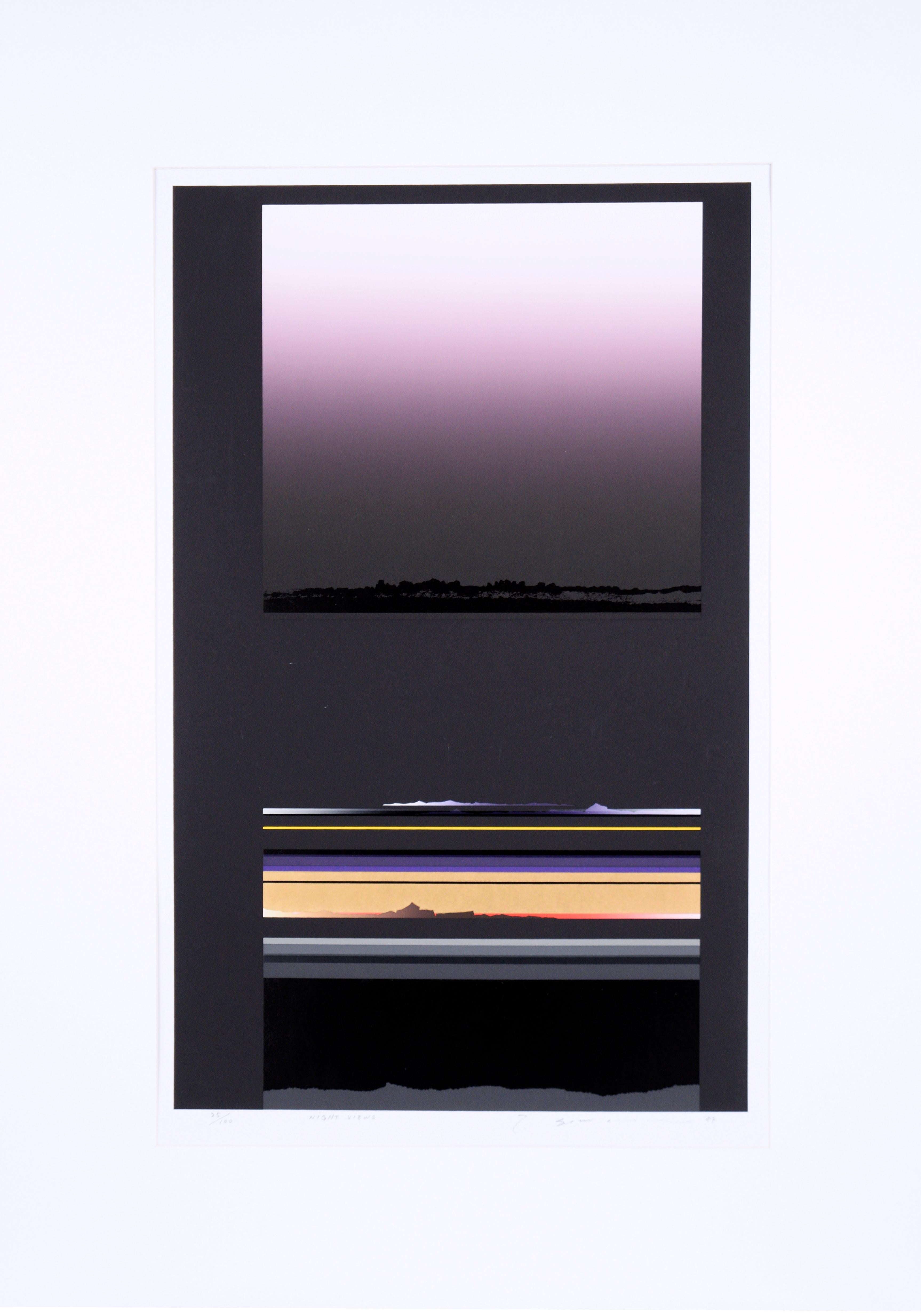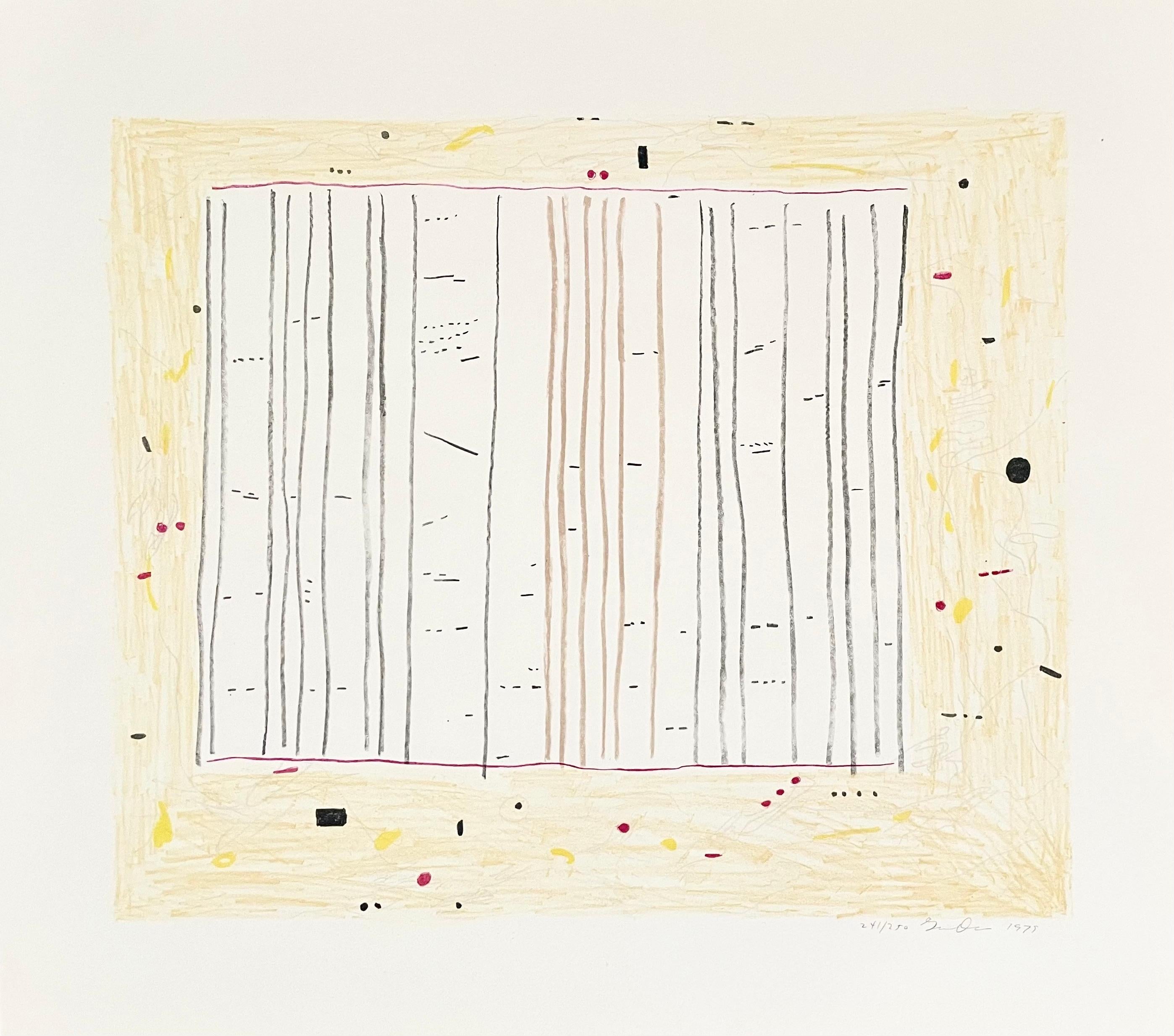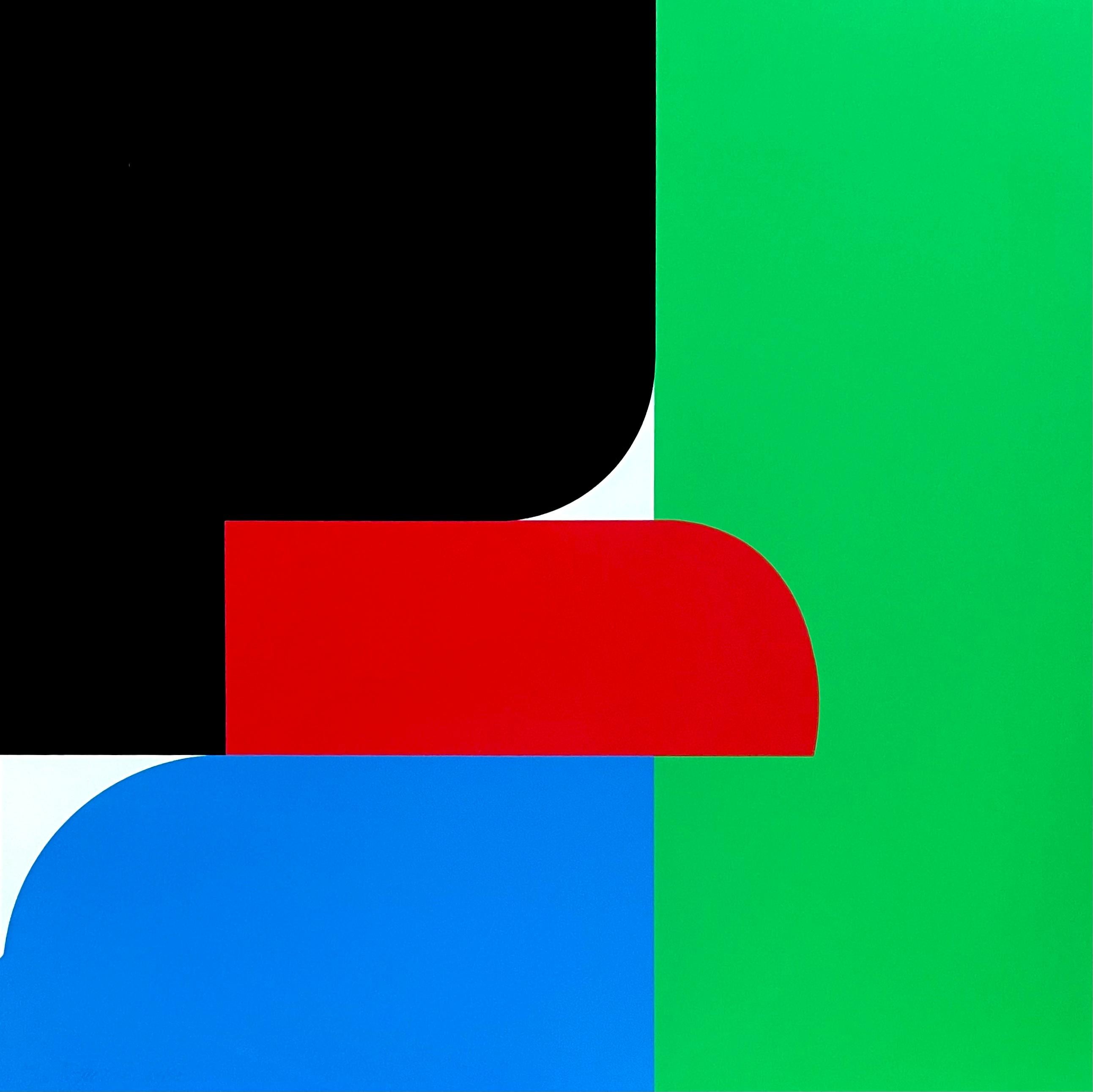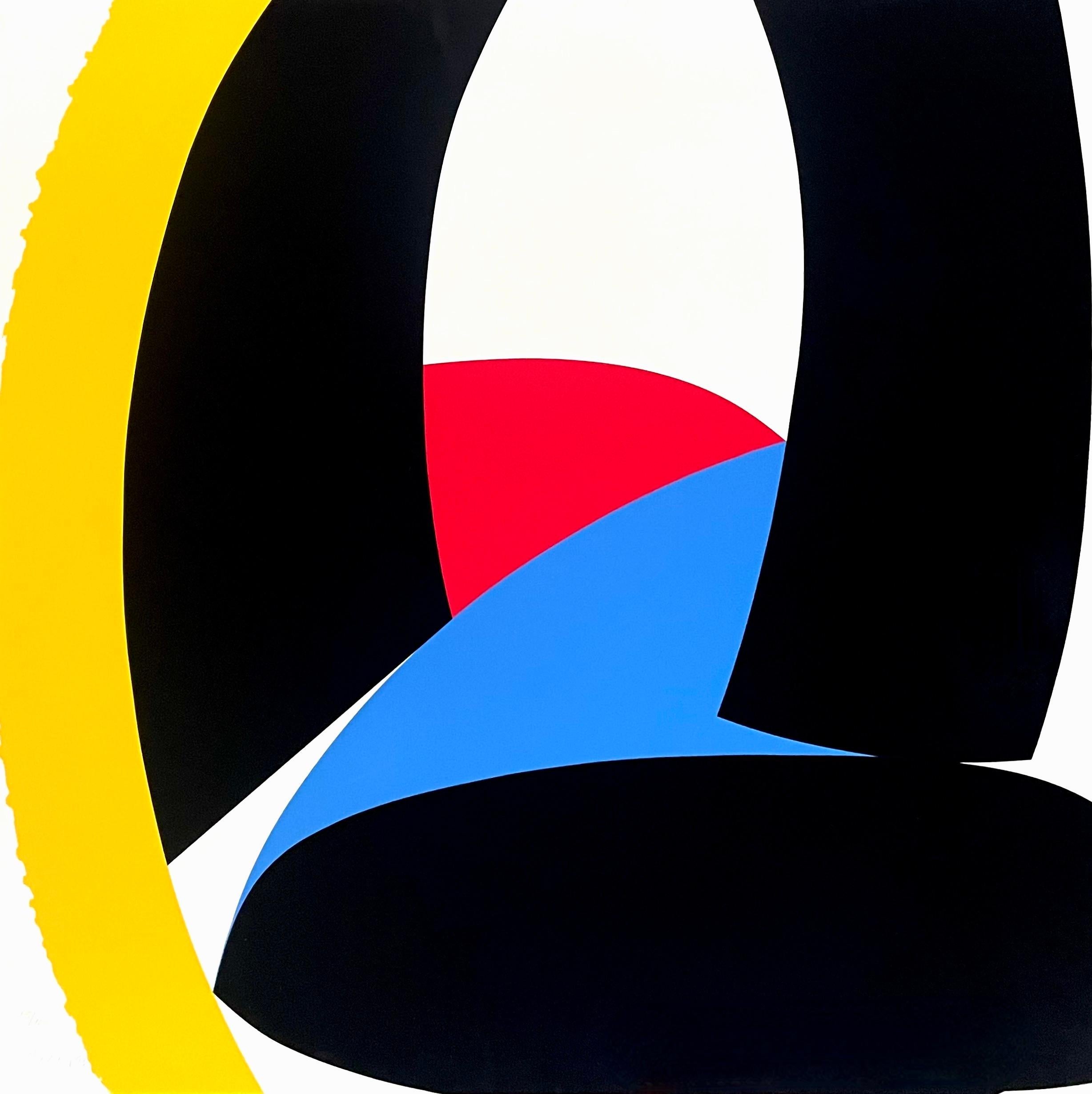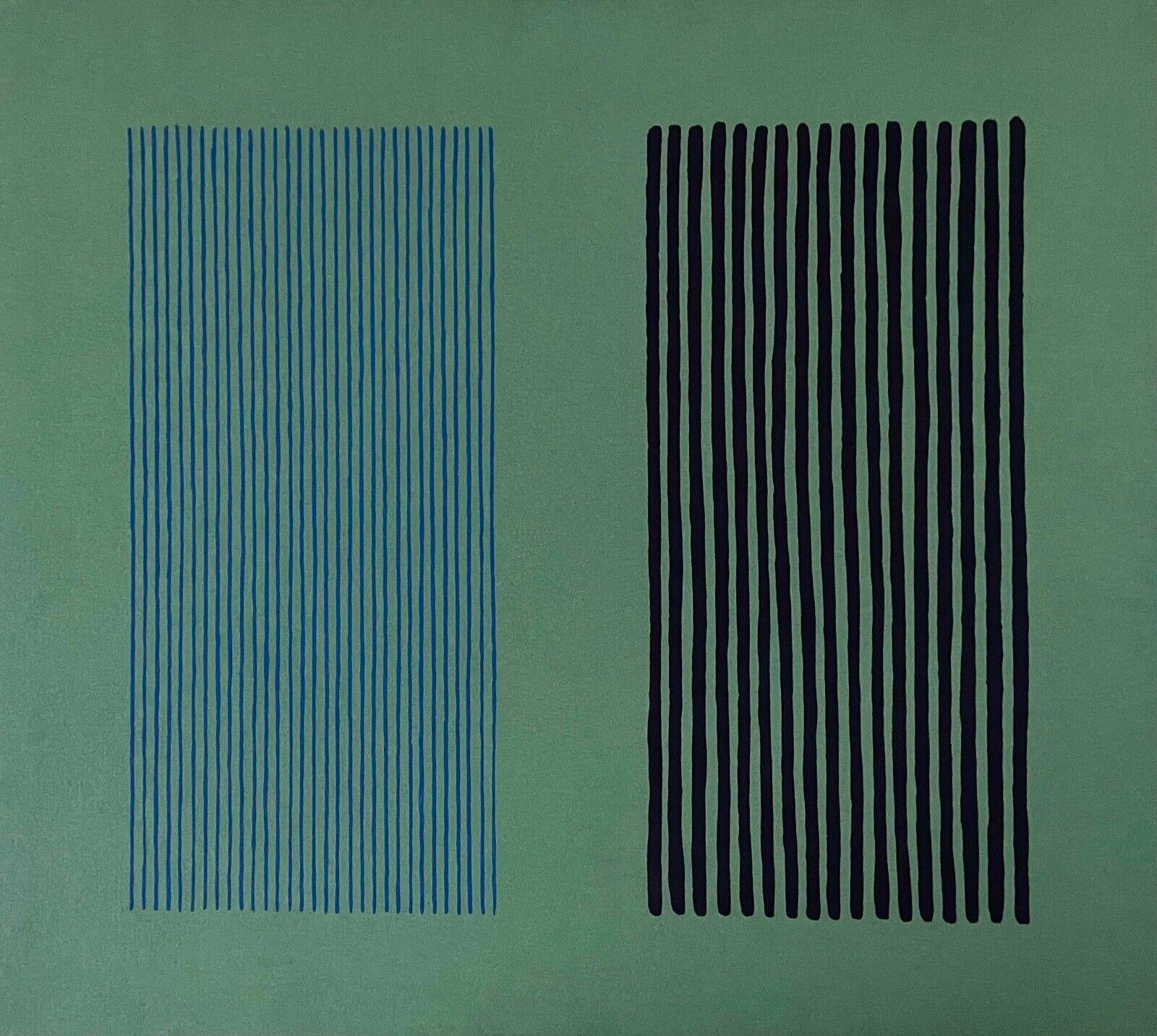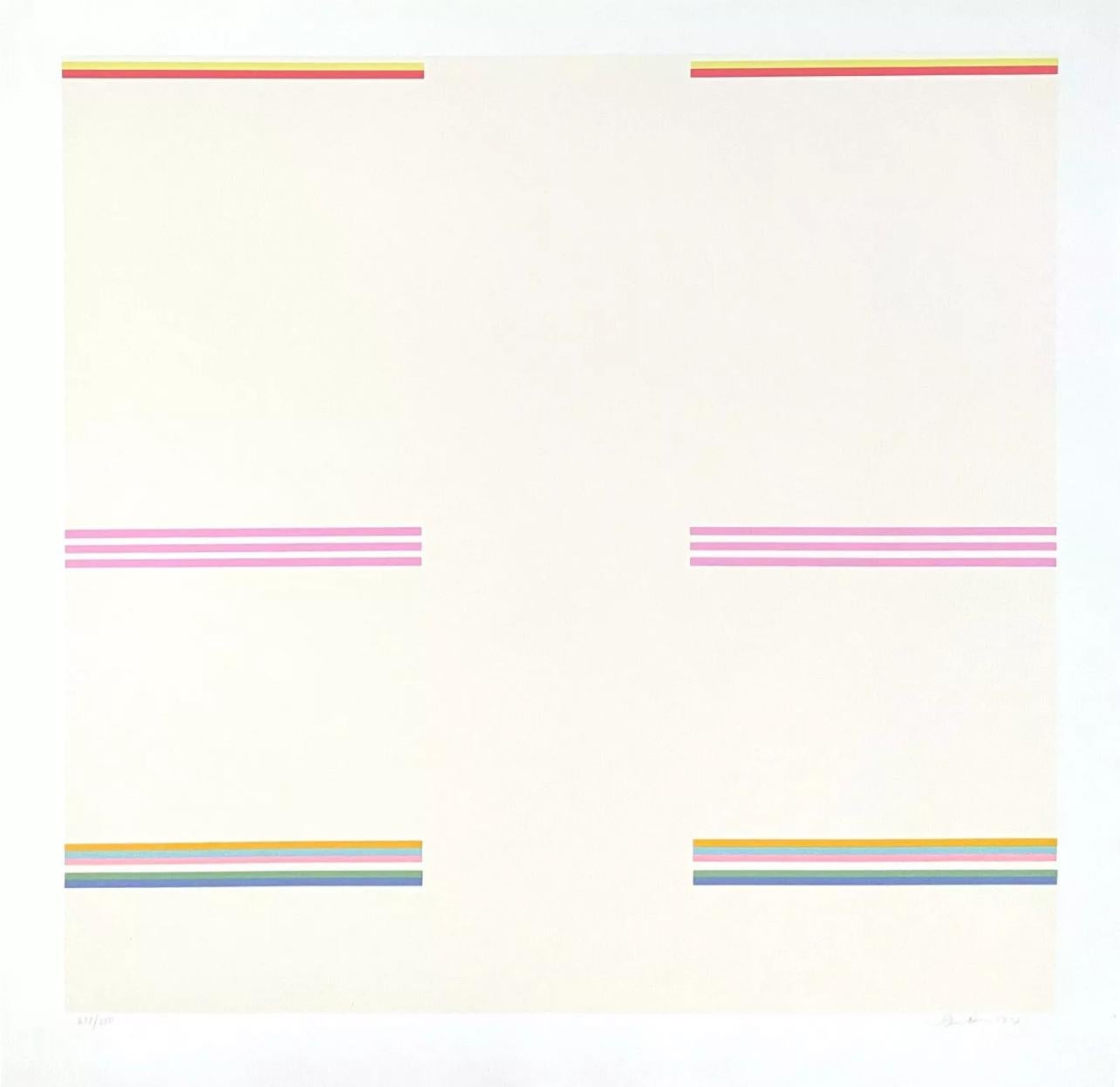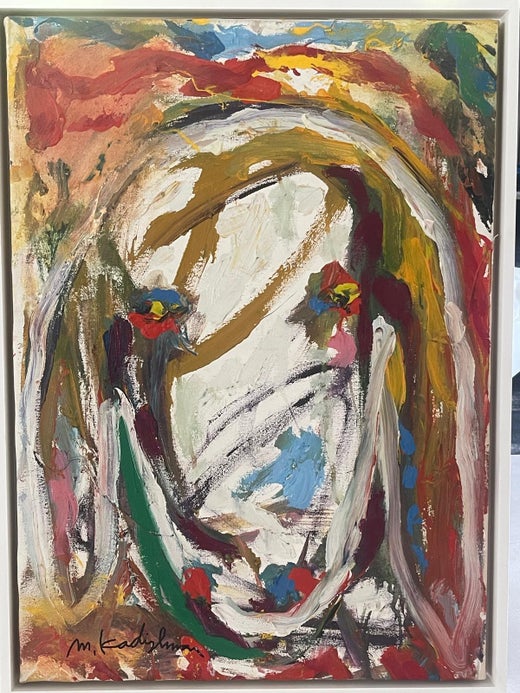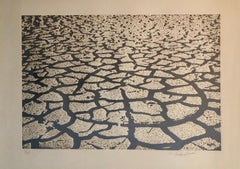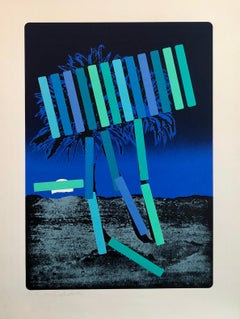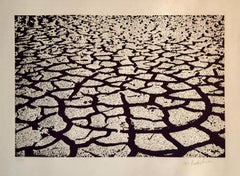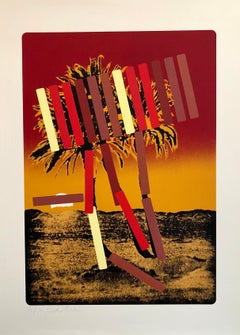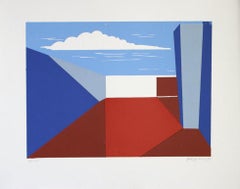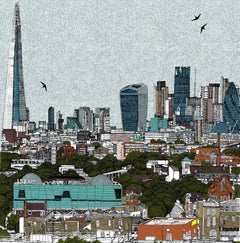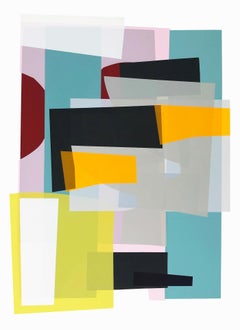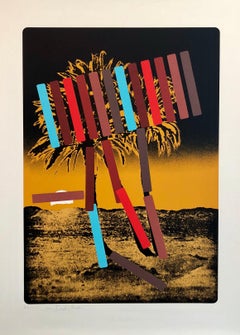
Israeli Modern Pop Art Photo Silkscreen Serigraph Palm Trees Kadishman
View Similar Items
Want more images or videos?
Request additional images or videos from the seller
1 of 10
Menashe KadishmanIsraeli Modern Pop Art Photo Silkscreen Serigraph Palm Trees Kadishmanc.1979
c.1979
About the Item
- Creator:Menashe Kadishman (1932, Israeli)
- Creation Year:c.1979
- Dimensions:Height: 40 in (101.6 cm)Width: 29.5 in (74.93 cm)
- Medium:
- Movement & Style:
- Period:
- Condition:never framed. minor wear.
- Gallery Location:Surfside, FL
- Reference Number:1stDibs: LU3823563181
Menashe Kadishman
Menashe Kadishman was born in Mandate Palestine. His father died when he was 15 years old. He left school to help his mother and provide for the family.[1] From 1947 to 1950, Kadishman studied with the Israeli sculptor Moshe Sternschuss at the Avni Institute of Art and Design in Tel Aviv, and in 1954 with the Israeli sculptor Rudi Lehmann in Jerusalem. In 1950–1953, Kadishman worked as a shepherd on Kibbutz Ma'ayan Baruch. This experience with nature, sheep and shepherding had a significant impact on his later artistic work and career. In 1959, Kadishman moved to London to study at Saint Martin's School of Art and the Slade School of Art.[2] In 1959-1960 he also studied with Anthony Caro and Reg Butler.[2] He had his first one-man show there in 1965 at the Grosvenor Gallery. In 1972, he returned to Israel. In the 1960s, Kadishman's sculptures were Minimalist in style, and so designed as to appear to defy gravity. This was achieved either through careful balance and construction, as in Suspense (1966), or by using glass and metal so that the metal appeared unsupported, as in Segments (1968). The glass allowed the environment to be part of the work. The first major appearance of sheep in his work was at the 1978 Venice Biennale, where Kadishman presented a flock of colored live sheep as living art.[4] In 1995, he began painting portraits of sheep by the hundreds, and even thousands, each one different from the next. These instantly-recognizable sheep portraits soon became his artistic "trademark"
About the Seller
4.9
Platinum Seller
Premium sellers with a 4.7+ rating and 24-hour response times
Established in 1995
1stDibs seller since 2014
1,744 sales on 1stDibs
Typical response time: 2 hours
Authenticity Guarantee
In the unlikely event there’s an issue with an item’s authenticity, contact us within 1 year for a full refund. DetailsMoney-Back Guarantee
If your item is not as described, is damaged in transit, or does not arrive, contact us within 7 days for a full refund. Details24-Hour Cancellation
You have a 24-hour grace period in which to reconsider your purchase, with no questions asked.Vetted Professional Sellers
Our world-class sellers must adhere to strict standards for service and quality, maintaining the integrity of our listings.Price-Match Guarantee
If you find that a seller listed the same item for a lower price elsewhere, we’ll match it.Trusted Global Delivery
Our best-in-class carrier network provides specialized shipping options worldwide, including custom delivery.More From This Seller
View AllIsraeli Modern Pop Art Aquatint Etching Cracked Earth Art Kadishman Lithograph
By Menashe Kadishman
Located in Surfside, FL
This one is a metallic silver gray color.
Menashe Kadishman was born in Tel-Aviv in 1932. He is a Graduate of St. Martin's School of Art, University of London Studies with Anthony Ca...
Category
1970s Abstract Geometric Landscape Prints
Materials
Etching, Aquatint, Lithograph
Israeli Modern Pop Art Photo Silkscreen Serigraph Palm Trees Kadishman
By Menashe Kadishman
Located in Surfside, FL
Menashe Kadishman was born in Tel-Aviv in 1932. He is a Graduate of St. Martin's School of Art, University of London Studies with Anthony Caro, Reg Butler. From 1947 to 1950, Kadish...
Category
1970s Abstract Geometric Landscape Prints
Materials
Etching, Aquatint, Lithograph
Israeli Modern Pop Art Aquatint Etching Cracked Earth Art Kadishman Lithograph
By Menashe Kadishman
Located in Surfside, FL
This one is a dark burgundy or purple color.
Menashe Kadishman was born in Tel-Aviv in 1932. He is a Graduate of St. Martin's School of Art, University of London Studies with Anthony...
Category
1970s Abstract Geometric Landscape Prints
Materials
Etching, Aquatint, Lithograph
Israeli Modern Pop Art Photo Silkscreen Serigraph Palm Trees Kadishman
By Menashe Kadishman
Located in Surfside, FL
Menashe Kadishman was born in Tel-Aviv in 1932. He is a Graduate of St. Martin's School of Art, University of London Studies with Anthony Caro, Reg Butler. From 1947 to 1950, Kadish...
Category
1970s Abstract Geometric Landscape Prints
Materials
Etching, Aquatint, Lithograph
Michael Gross Israeli Minimalist Conceptual Art, Abstract Jerusalem Silkscreen
By Michael Gross
Located in Surfside, FL
Michael Gross (Hebrew: מיכאל גרוס; 1920 – 4 November 2004) was an Israeli painter, sculptor and conceptual artist.
Michael Gross was born in Tiberias in the British-administered Palestine in 1920. He grew up in the farming village of Migdal. In 1939-1940, he left to study at the Teachers’ Training College in Jerusalem. In 1939, while he was away, his father was murdered by Arabs, and the family farm and home were destroyed. This event impacted on his work as an artist.
From 1943 to 1945, he studied architecture at Technion – Israel Institute of Technology in Haifa. From 1951 to 1954, he studied art at the École nationale supérieure des Beaux-Arts in Paris. He returned to Israel in 1954 and settled in the artists’ village of Ein Hod.
Gross's works are imbued with the light and spirit. They are minimalist, but never pure abstraction, always tied to natural form and laden with feeling. In his early paintings, Gross simplified form in order to concentrate on proportion, broad areas of color, and the size and placement of each element. This reductive process was also notable in his sculptures, whether in painted iron or other materials such as white concrete. In later paintings, he often juxtaposed large off-white panels with patches of tone, adding textured materials such as wooden beams, burlap and rope. Gross’s rough, freely-brushed surfaces, along with the use of soft pastel coloring, conjure up images of the Israeli landscape.
Education
1936-1940 Teachers Seminary, Jerusalem
1943-1945, Technion, Haifa, architecture, studied sculpture with Moshe Ziffer.
1951-1954 Beaux Arts, Paris with Michel Guimond
Teaching
1954 - 1954 Higher School of Education, Haifa.
1957-1960 Bezalel Academy of Arts and Design, Jerusalem
1960-1980 Oranim Art Institute, Tivon
Awards
1964: Hermann Struck Prize
1967: Dizengoff Prize
1971...
Category
1970s Modern Landscape Prints
Materials
Lithograph, Screen
Pop Art Aspen Road Sign D'arcangelo Silkscreen Chiron Press Vintage Art Poster
Located in Surfside, FL
Allan D'Arcangelo (American/New York, 1930-1998),
"Aspen Center of Contemporary Art",
1967
silkscreen, hand signed in pencil, dated, numbered "45/200" and blind stamped "Chiron Press, New York, NY"
32 in. x 24 in.
Allan D'Arcangelo (1930-1998) was an American artist and printmaker, best known for his paintings of highways and road signs that border on pop art and minimalism, precisionism, Abstract illusionism and hard-edge painting, and also surrealism. His subject matter is distinctly American and evokes, at times, a cautious outlook on the future of this country. Allan D'Arcangelo was the son of Italian immigrants. He studied at the University of Buffalo from 1948–1953, where he got his bachelor's degree in history. After college, he moved to Manhattan and picked up his studies again at the New School of Social Research and the City University of New York, City College. At this time, he encountered Abstract Expressionist painters who were in vogue at the moment. After joining the army in the mid 1950s, he used the GI Bill to study painting at Mexico City College from 1957–59, driving there over 12 days in an old bakery truck retrofitted as a camper. However, he returned to New York in 1959, in search of the unique American experience. It was at this time that his painting took on a cool sensibility reminiscent of Roy Lichtenstein and Andy Warhol. His interests engaged with the environment, anti-Vietnam War protests, and the commodification and objectification of female sexuality. D'Arcangelo first achieved recognition in 1962, when he was invited to contribute an etching to The International Anthology of Contemporary Engraving: America Discovered; his first solo exhibition came the next year, at the Thiebaud Gallery in New York City. In 1965 he contributed three screenprints to Original Edition's 11 Pop Artists portfolio. By the 1970s, D'Arcangelo had received significant recognition in the art world. He was well known for his paintings of quintessentially American highways and infrastructure, and in 1971 was commissioned by the Department of the Interior to paint the Grand Coulee Dam in Washington state. However, his sense of morality always trumped his interest in art world fame. In 1975, he decided to quit the gallery that had been representing him for years, Marlborough Gallery, because of the way they handled Mark Rothko legacy.
D'Arcangelo rejected Abstract Expressionism, though his early work has a painterly and somewhat expressive feel. He quickly turned to a style of art that seemed to border on Pop Art and Minimalism, Precisionism and Hard-Edge painting. Evidently, he didn't fit neatly in the category of Pop Art, though he shared subjects (women, signs, Superman) and techniques (stencil, assemblage) with these artists.He turned to expansive, if detached scenes of the American highway. These paintings are reminiscent of Giorgio de Chirico-though perhaps not as interested in isolation-and Salvador Dali-though there is a stronger interest in the present and disinterest in the past. These paintings also have a sharp quality that is reminiscent of the precisionist style, or more specifically, Charles Sheeler. 1950s, Before D'Arcangelo returned to New York, his style was roughly figurative and reminiscent of folk art. During the early 1960s, Allan D'Arcangelo was linked with Pop Art. "Marilyn" (1962) depicts an illustrative head and shoulders on which the facial features are marked by lettered slits to be "fitted" with the eyebrows, eyes, nose and mouth which appear off to the right in the composition. In "Madonna and Child," (1963) the featureless faces of Jackie Kennedy and Caroline are ringed with haloes, enough to make their status as contemporary icons perfectly clear.
Select Exhibitions:
Fischbach Gallery, New York,
Ileana Sonnabend Gallery, Paris,
Gallery Müller, Stuttgart, Germany
Hans Neuendorf Gallery, Hamburg, Germany
Dwan Gallery...
Category
1960s Pop Art Abstract Prints
Materials
Lithograph, Screen
You May Also Like
Untitled: Abstract Perspective (Edition 26/200)
By Jeffrey Dali
Located in New York, NY
Jeffery Dali (American, 1929-2006) "Untitled: Abstract Perspective (Edition 26/200)", Abstract Geometric Serigraph Screen Print numbered and signed in Pencil, 14 x 18, 1970
Colors: ...
Category
1970s Abstract Geometric Abstract Prints
Materials
Screen
Untitled: Lavender, Blue & Pink Serigraph (Edition 303/350)
Located in New York, NY
Santoro, "Untitled: Lavender, Blue & Pink Serigraph (Edition 303/350)" Mid-Century Modern Serigraph/ Abstract Geometric Screenprint, Signed in Graphite lower right, marked as an Edit...
Category
Late 20th Century Abstract Geometric Abstract Prints
Materials
Screen
Living and Learning in London by Clare Halifax, Limited Edition Cityscape Print
By Clare Halifax
Located in Deddington, GB
Clare Halifax
Living and Learning in London
Limited Edition 9 Colour Silkscreen Print
Edition of 75
Sheet Size: H 37cm x W 38cm x D 0.1cm
Sold Unframed
Please note that in situ image...
Category
21st Century and Contemporary Abstract Geometric Abstract Prints
Materials
Paper, Screen
Jonathan Lawes, Lago Verde, Unique Geometric Print, Original Abstract Art
By Jonathan Lawes
Located in Deddington, GB
JONATHAN LAWES
Lago Verde
Bright Abstract Print
Unique Multi-Layered Screen Print
Sheet Size: H 75cm x W 55cm x D 0.1cm
Sold Unframed
Signed Lower Right Dated and Numbered on the Re...
Category
21st Century and Contemporary Abstract Geometric Abstract Prints
Materials
Paper, Screen
Lago Verde, Unique Geometric Print, Original Abstract Art, Statement Artwork
By Jonathan Lawes
Located in Deddington, GB
Lago Verde is a unique silkscreen print by artist, Jonathan Lawes. The combination of bright and muted tones gives the work a layered effect to make an impactful statement piece.
Jo...
Category
21st Century and Contemporary Abstract Geometric Abstract Prints
Materials
Paper, Screen
"Night Views" Silkscreen Print by The Skyscape Artist, 25/100
Located in Soquel, CA
"Night Views" Silkscreen Print by The Skyscape Artist, 25/100.
By Tetsuro Sawada ( Japanese, 1933-1998)
This raven black geometric abstraction focuses on hard-edged horizontal lines, color, and light, giving the impression of dusk through the "bokashi," or shading, technique, which is most difficult in the silkscreen medium, a good example of Sawada's theme of the infinite beyond, the silent emptiness of the universe. Signature in the bottom right corner reads, "T. Sawada '87," titled in the bottom center, "Night Views," and numbered, "25/100," in the bottom left corner. Presented in a new white mat. Paper size: 34"H x 22"W, Mat size: 39"H x 27"W
Born in Hokkaido, Tetsuro Sawada (1933-1998, Japanese) graduated from Musashimo Art University where he majored in Western painting. In 1960, he began painting abstract oils...
Category
21st Century and Contemporary Abstract Geometric Abstract Prints
Materials
Paper, Screen
$1,080 Sale Price
20% Off
